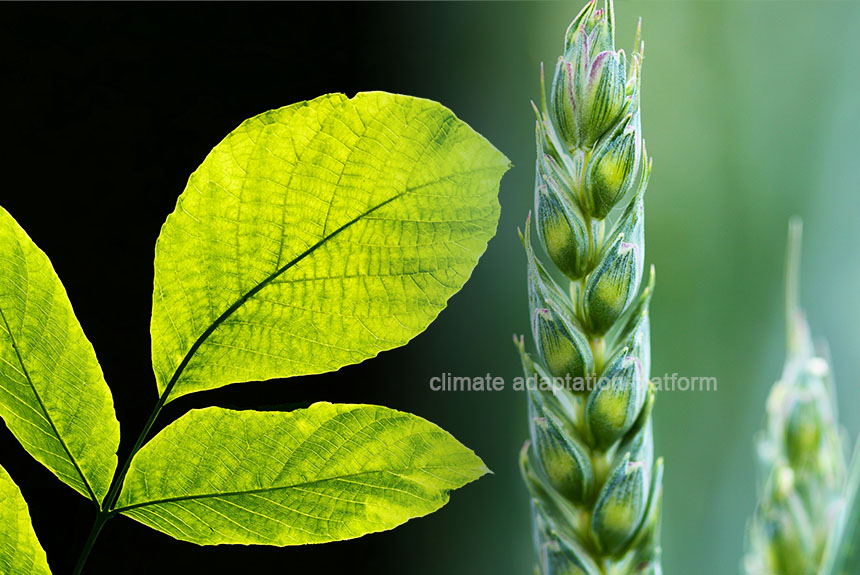Petroleum is still the leading energy source worldwide, and consumption of this fossil fuel has continued to steadily increase until the present, sending planet-warming gas into the atmosphere. Growing calls to shift to renewable energy and phase down fossil fuels have resulted in the upward trend of renewables.
According to the 2023 report by the International Renewable Energy Agency (IRENA), “renewable energy continues to grow at record levels despite global uncertainties, confirming the downward trend of fossil-fuelled power generation.”
As the world transitions to renewable energy and wean from fossil fuel use, capturing carbon emissions from sources such as industrial plants or directly removing Carbon from the air are put forward as solutions to mitigate climate change.
The Guardian article features biotech companies that modify the genes of trees and plants through technologies to capture more carbon dioxide from the atmosphere and increase their storage capacity in the soil.
Living Carbon, a biotech firm based in California, genetically modifies different lines of poplar plants to improve their capacity to absorb CO2. The company also sells carbon removal credits. The article says that about 170,000 seedlings of varying tree varieties were planted over about 120 hectares (300 acres), about 5% of which were genetically modified poplars. Living Carbon, founded in 2019, has received $36 million in capital funding.
The firm published a scientific paper, Enhanced Photosynthetic Efficiency for Increased Carbon Assimilation and Woody Biomass Production in Engineered Hybrid Poplar, explaining how they were able to increase the amount of photosynthesis in poplar trees to allow them to soak up more CO2 from the atmosphere while channelling that CO2 into tree growth.
They report that in a four-month-long greenhouse trial, its modified poplars increased biomass by 35-53% over its controls, equivalent to removing 17-27% more CO2 from the air.
Two other California-based research institutions – Salk Institute for Biological Studies in San Diego and the Innovative Genomics Institute (IGI) in Berkeley, a joint venture between the University of California, Berkeley and UC, San Francisco, are finding ways how to engineer crops to make them better at sucking CO2 from the atmosphere.
Plant scientists at the Salk have been working to engineer crop plants they call “Salk Ideal Plants” since 2017. They focus on modifying crops like soya beans, rice, wheat, corn, rapeseed/canola, sorghum, and Cover Cress in three ways.
- First, to have more extensive roots to sequester more Carbon.
- Second, to have roots that can penetrate deeper into the soil where microbial activity is lower, so it will take longer for the roots to decompose, and where the minerals are for Carbon to associate with get stored.
- Third, for roots that produce more of a carbon-rich polymer called suberin.
Other biotech firms that try to tinker with plant genetics to increase their capacity to store Carbon in the soil include the UK-based start-up Wild Bio, an extension of Oxford University’s Oxford Centre for Plant Science Innovation, founded in 2021. It hopes to alter crops to produce more food and leave behind more Carbon in the soil, drawing inspiration from plants in the wild.
The article notes that these superpowered plants hold promise in fighting climate change. However, to prove their effectiveness, these plants growing in the greenhouse have yet to be planted at scale in the real world.
Learn more about superpowered plants as promising climate change solutions by clicking the links below:
Source:
Corbyn, Z. (2023 October 15). Could superpowered plants be the heroes of the climate crisis? The Guardian. Retrieved from https://www.theguardian.com/environment/2023/oct/15/superpower-plants-absorb-carbon-co2-climate-crisis
Record Growth in Renewables Achieved Despite Energy Crisis. (2023, March 21). IRENA. Retrieved from https://www.irena.org/News/pressreleases/2023/Mar/Record-9-point-6-Percentage-Growth-in-Renewables-Achieved-Despite-Energy-Crisis
Tao, Y., Chiu, L.-W., Hoyle, J. W., Dewhirst, R. A., Richey, C., Rasmussen, K., Du, J., et al. (2023). Enhanced Photosynthetic Efficiency for Increased Carbon Assimilation and Woody Biomass Production in Engineered Hybrid Poplar. Forests, 14(4), 827. MDPI AG. Retrieved from http://dx.doi.org/10.3390/f14040827



Leave a Reply